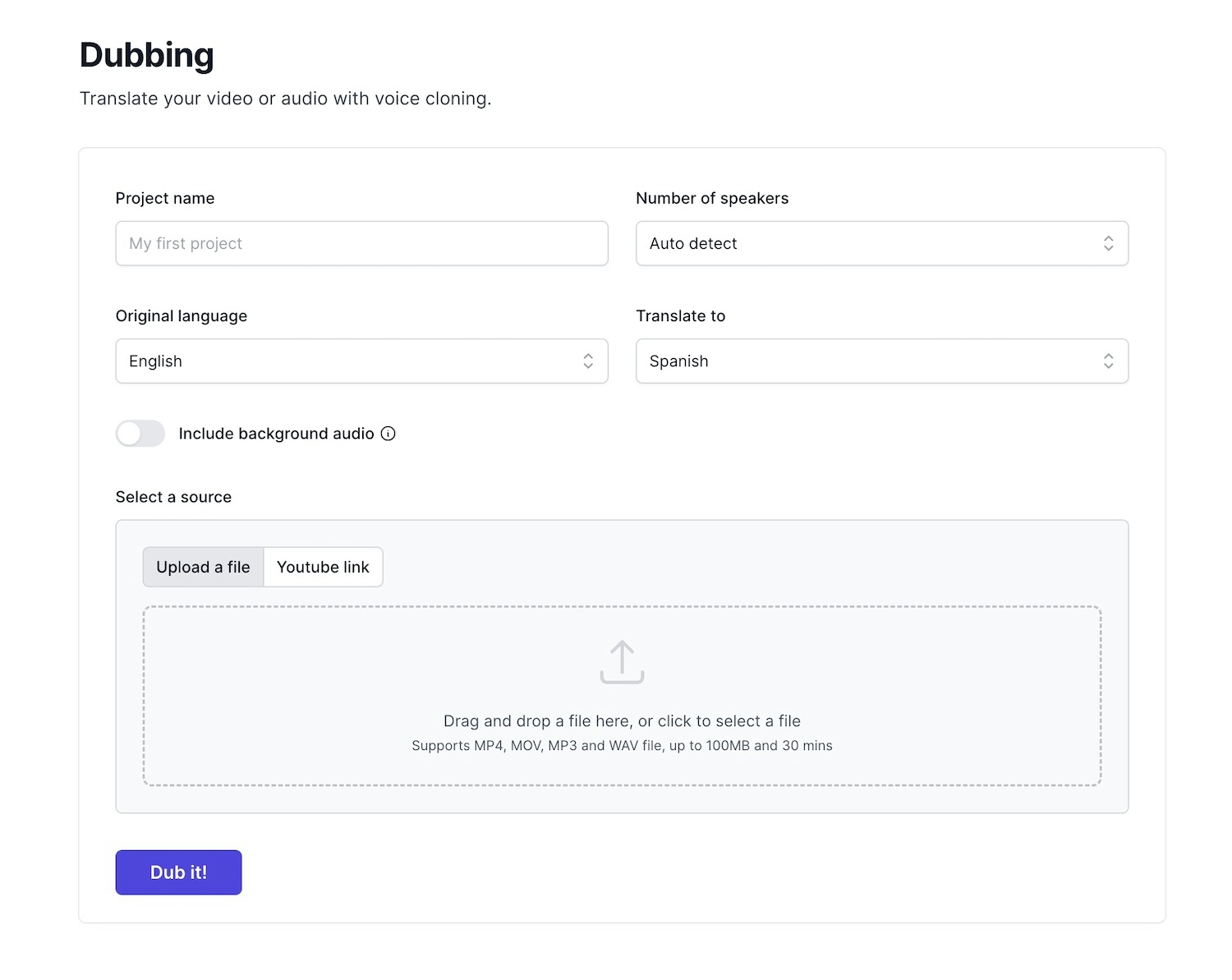English to Chinese Video Converter
Break language barriers and expand your global reach with professional dubbing, allowing your video content to resonate with a wider audience in their native language.
- 📈Business Expansion
Companies looking to expand their market to China need to adapt their video content to reach a broader audience. A English to Chinese video converter helps to overcome the language barrier, allowing businesses to communicate their message effectively and increase their global reach.
- 🎓Cultural Exchange
Students, researchers, or enthusiasts of Chinese culture may need to convert English videos to Chinese to better understand and appreciate cultural nuances. This is particularly useful for educational content, documentaries, or subtitled films.
- ✈️Travel and Tourism
Travelers or tourism industry professionals may want to create video guides or promotional materials in Chinese to cater to the growing number of Chinese tourists. A English to Chinese video converter enables them to create engaging content that resonates with their target audience.
Everything you need to dub your content
Dub your content with AI-powered translation, voice cloning, text-to-speech and much more at your fingertips.
- Translate content to 30+ languages
- Translate and dub your content and reach a global audience with ease.
- Multi-speaker support
- Support up to 10 speakers at once with automatic speaker detection.
- Voice clone
- Cloning any voice and maintaining brand identity across diverse markets.
- Transcript, subtitles and audio source files
- Access to translated transcript, subtitle and audio source files for your custom editing needs.
Tip tips on choosing the best English to Chinese Video Converter
Selecting the right tool ensures accurate translation, high-quality output, and maximum audience engagement and understanding.
- For English to Chinese video conversion, it's essential to consider the differences in tone and pitch between the two languages. Chinese has a more melodic intonation, so adjust the pitch and tone of the translated audio to sound more natural to Chinese speakers.
- When using voice clone dubbing, pay attention to the speaker's pace and rhythm. Chinese tends to be spoken at a faster pace than English, so adjust the audio speed to ensure a more authentic listening experience.
- Chinese characters have different stroke orders and writing directions, so ensure that your captions are correctly formatted to avoid confusion. For example, in Simplified Chinese, the character for 'hello' () should be written from top to bottom, left to right.
- Idiomatic expressions and cultural references may not translate directly from English to Chinese. Consider using cultural adaptation features to replace these expressions with more suitable equivalents, ensuring the translated content resonates with Chinese audiences.
- For Mandarin Chinese, which has different tones, ensure that your translator accurately conveys the correct tones to avoid miscommunication. For example, the word 'ma' can mean 'mother,' 'horse,' 'hemp,' or 'scold,' depending on the tone used.
Dub your video with 3 easy steps.
Create high-quality dubbed audio or video in a few clicks.
- 1. Upload fileEasily upload audio and video file or enter a YouTube url to start.
- 2. Instant dubbingLet AI translate and dub your content to the desired language.
- 3. Download assetsDownload transcripts, audio clips and final dubbed audio or video file.

Loved by creators worldwide.
Don't just take our word for it, see what our customers have to say!
I was needing to translate audio with a natural sounding speaker but it was hard to find a good AI program that didn't sound like a robot. Dub AI sounds extremely natural!
Konaruhi
The voice clone is unbelievable. My audience actually thought it was me speaking Japanese in the video.
Viktor H.
Oh wow. My feedback is good!!! That was a noisy recording that the person made driving a car with a standard shift. It came out really clear. Really!!
Peggy G.
I'd like to say that I've tried a lot of AI dubbing software and yours is CLEARLY the best. Yours is doing exactly what I want, simple and quick.
@gumytutoriels
Amazing product! It has saved us so much time to translate our marketing videos to different languages.
Tom R.
I have many friends who speak Chinese. I run a youtube channel giving philosophy lectures in English. My friends have been asking me to translate my videos into Chinese so they can enjoy them as well. Dub AI was the perfect tool for this purpose!
@TranscendentPhilosophy
